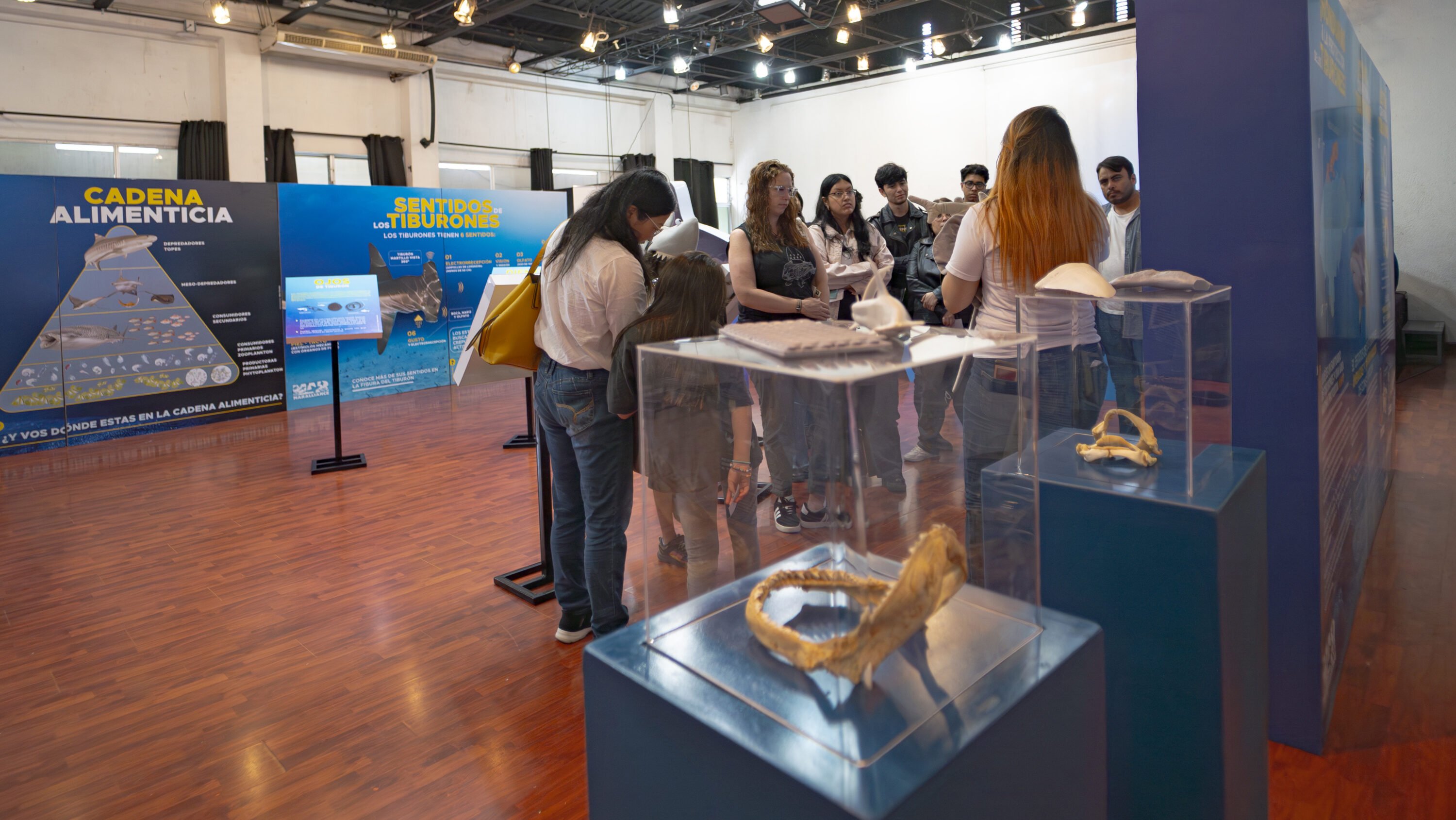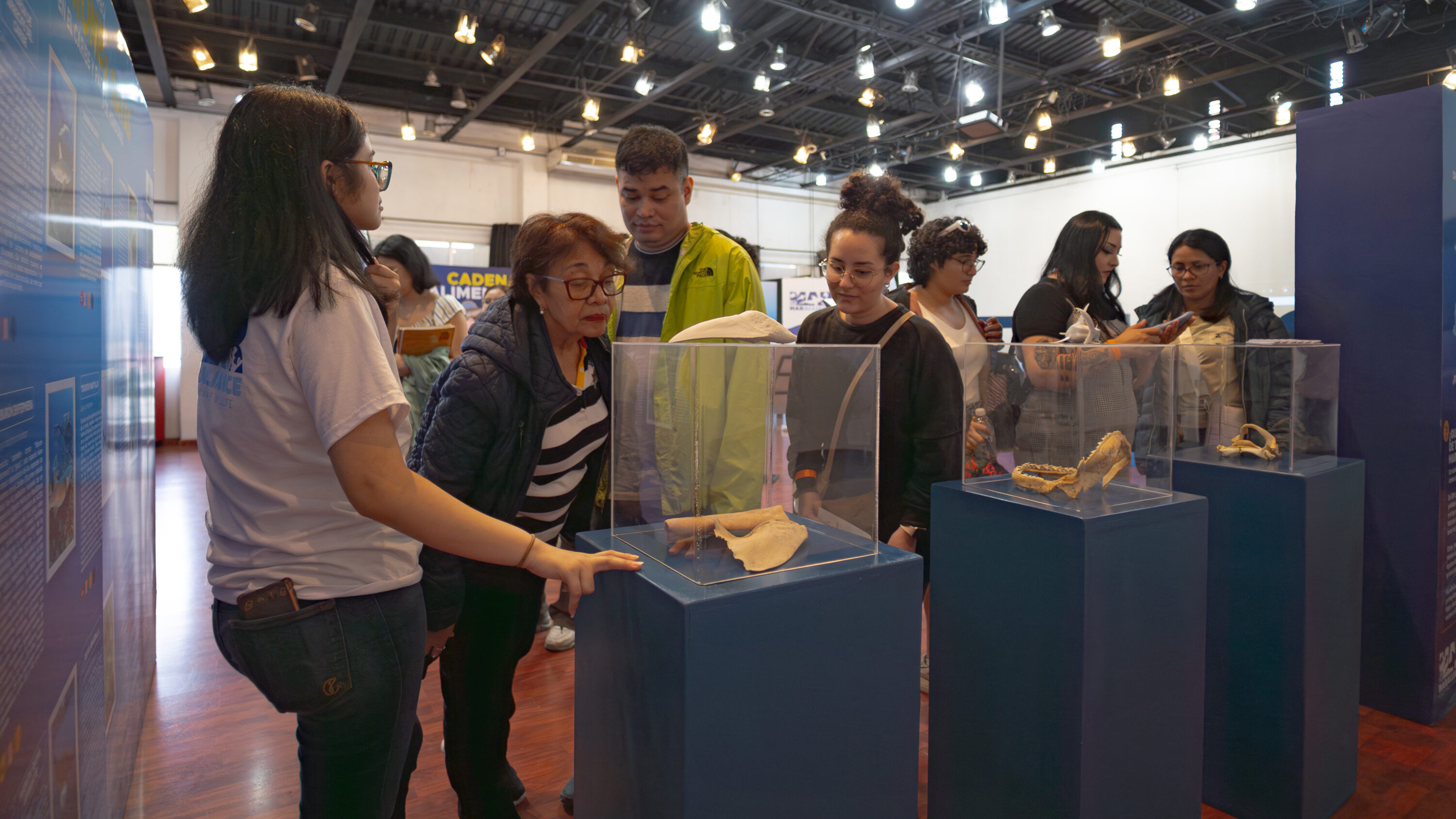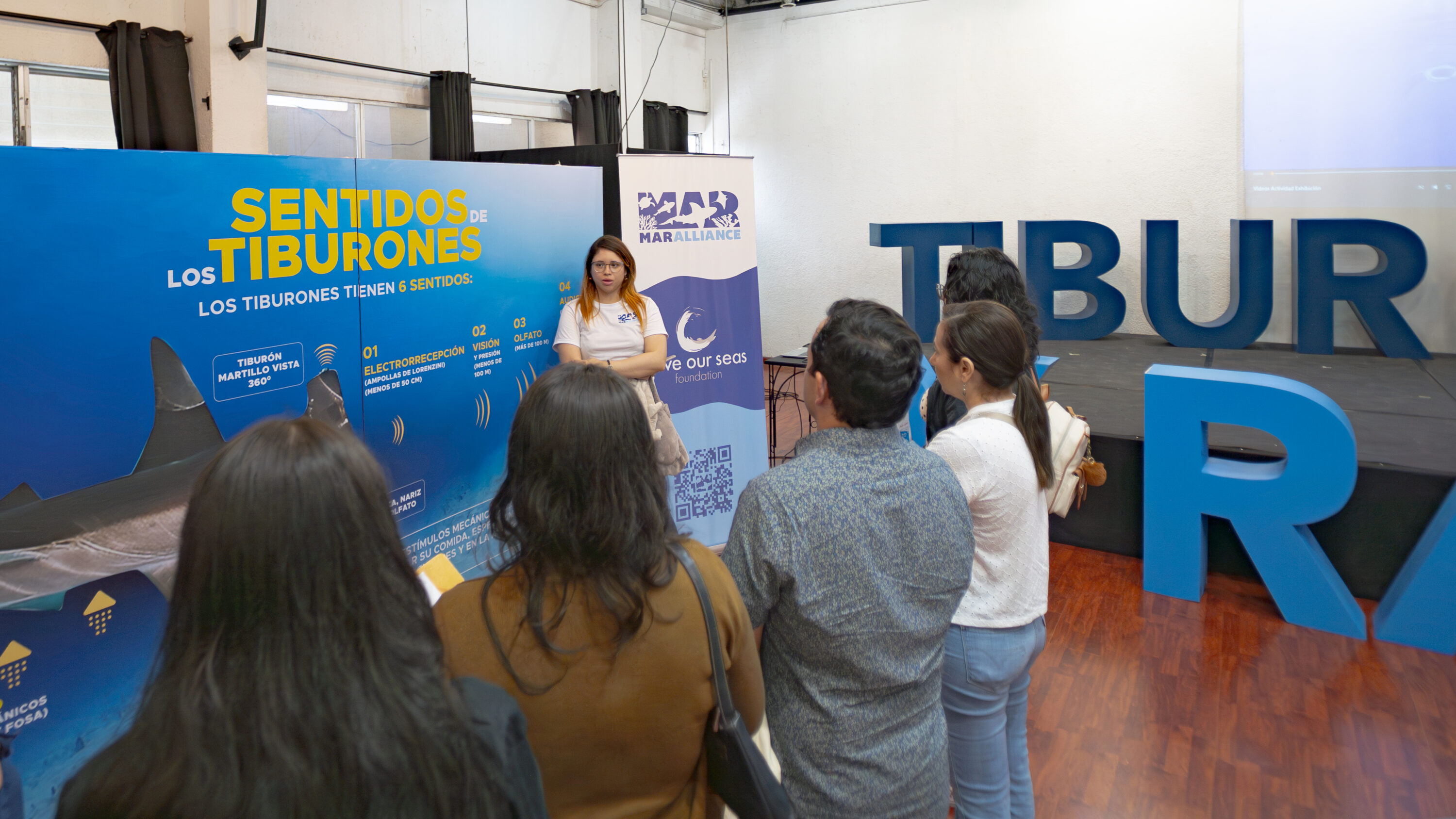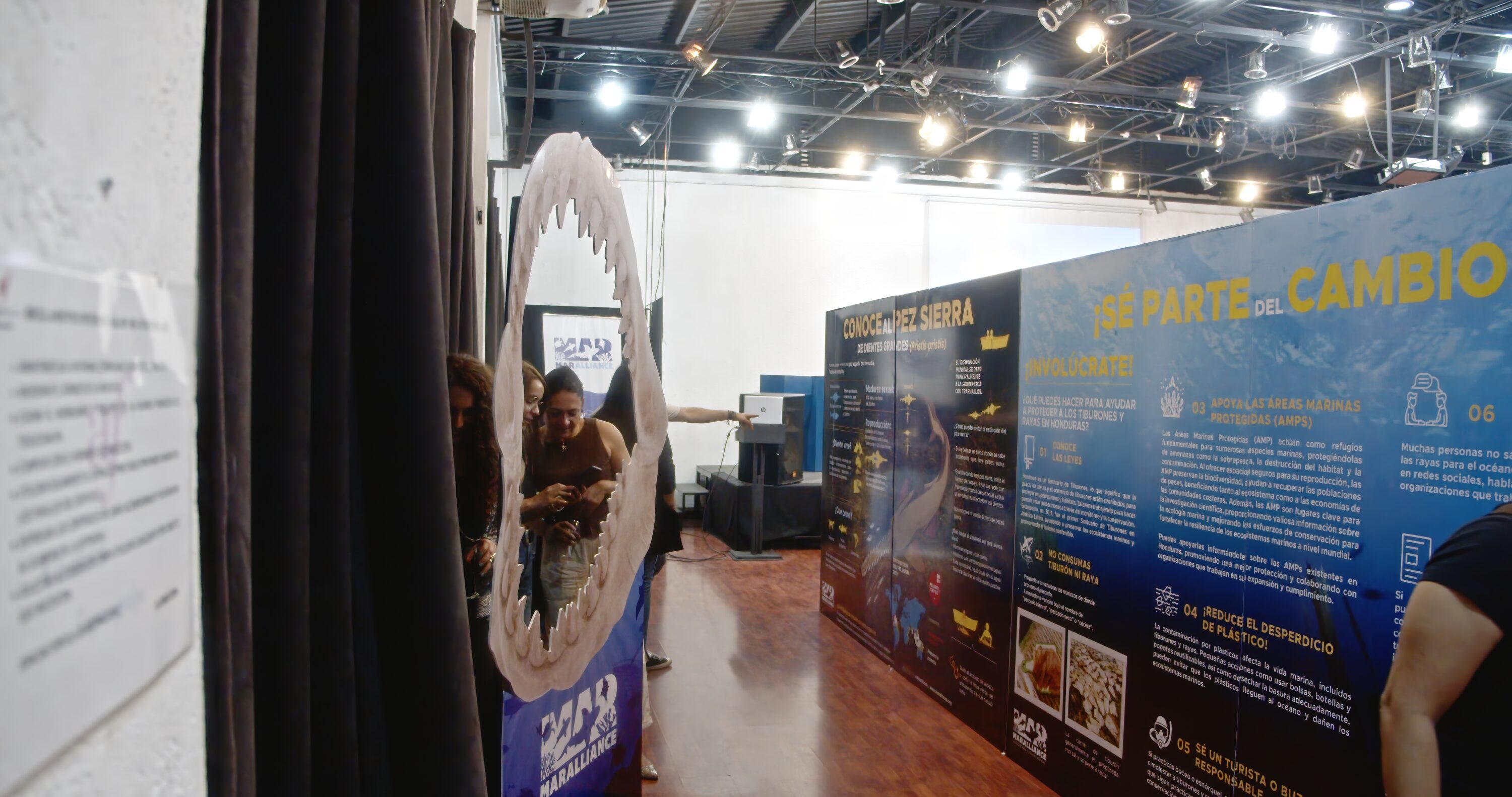Crafting an Exhibit About Sharks and Rays: Inspiring Conservation Through Education
Conceptualising an exhibition is like shaping a sculpture: starting with many ideas and concepts and watching them gradually take shape, whether through information panels, videos, images, or any other component that will be part of the exhibit.
Designing an exhibit about sharks and rays is a deep dive into both science and storytelling. These incredible creatures, often misunderstood, serve as powerful ambassadors for ocean health. When we began crafting this exhibit, our goal wasn’t just to display colourful informative panels or the awe-inspiring forms of a hammerhead – it was to create a lasting impact, especially on younger generations, about the importance of conservation and their role in it.

We rely on technology to connect with younger generations, but also to bring them closer to the wonders of the marine world and its conservation. Photo © Oscar Valle | MarAlliance
The process started with a central question: How can we turn passive observation into active engagement? Sharks and rays are charismatic, but their real power lies in the stories they tell about marine ecosystems, climate change, endangered species, and human impact. From that idea, the exhibit was shaped around immersive, emotionally resonant experiences. Instead of just presenting facts, we built narratives — stories of fishermen’s encounters with sharks, threats, and resilience.
We integrated hands-on elements like interactive maps tracking shark migrations, virtual reality to simulate the sensation of gliding with a manta ray, use their senses by being able to touch 3D models of shark skin and teeth or being able to observe a real sawfish, and who knows; maybe later experience a “Shark Lab” where kids could explore how different species feed, navigate, and protect themselves. These tools are not just for fun; I see them as bridges into deeper understanding.

Visitors admire the fossils and 3D pieces at the exhibit. Photo © Oscar Valle | MarAlliance
What made the experience truly rewarding was recognising the importance of framing the project for younger audiences. Today’s youth are growing up in a world facing unprecedented environmental challenges. But they’re also more informed, connected, and passionate than any generation before. We knew we needed to speak their language — not by simplifying the content, but by respecting their intelligence and curiosity.
This meant incorporating storytelling strategies that evoke empathy. We use rays and sharks stuffed animals for little kids’ tours so that they feel a connection with the animals they are about to learn more about. Our last panel invites them to pledge small actions, like reducing plastic use or supporting sustainable seafood, that have a cumulative impact. The idea isn’t to overwhelm them with problems, but to empower them with purpose.
Education is the cornerstone of conservation. Exhibits like this must do more than inform; they must inspire. They should challenge assumptions (e.g., that all sharks are dangerous), provide pathways to action, and cultivate a personal connection to distant ecosystems. By highlighting local efforts alongside global challenges, we made the topic feel accessible and urgent

Explaining to visitors the importance of shark and ray conservation is key to creating global awareness. Photo © Oscar Valle | MarAlliance
As creators, our responsibility is to present information and shape how the next generation sees their place in the world. A project like this is successful not when visitors remember every shark species displayed, but when a child walks away saying, “I want to help.”
Crafting the sharks and rays exhibit was more than curating artefacts or designing visuals — it was about creating a conversation that continues beyond the museum walls. It reminded us that conservation starts with connection, and the stories we choose to tell today can shape the world our children will inherit tomorrow.

Our last panel in the tour invites people to be part of the change. Photo © Oscar Valle | MarAlliance
